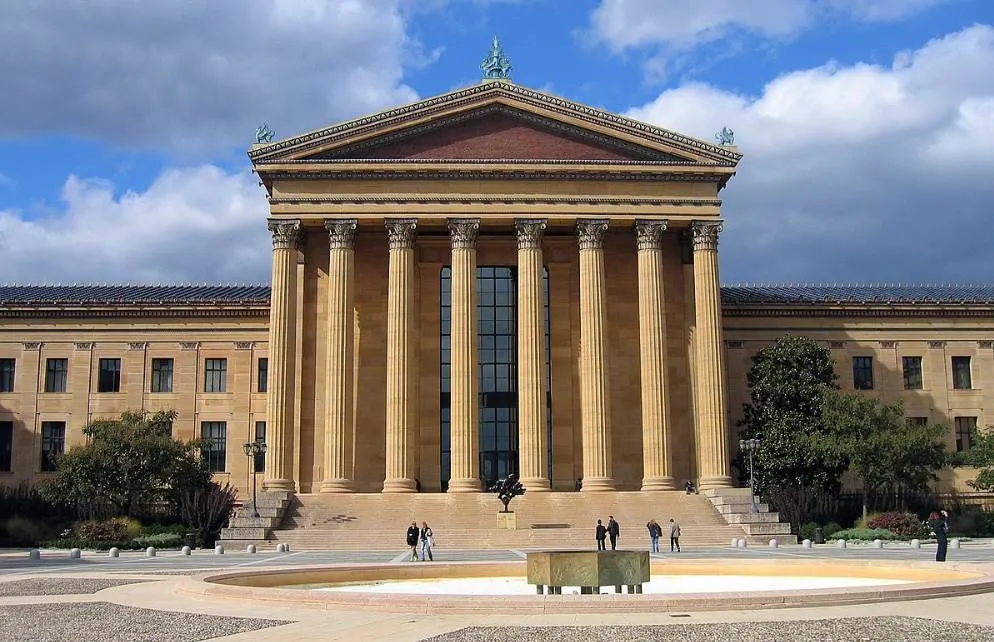When one of the most famous American artists in history witnessed a radically new medical procedure in the 19th century, he accurately depicted the scene.
Thomas Eakins (1844-1916) was a Realism artist who incorporated his intense interest in photography into fascinating Realism paintings.
In this article, you’ll discover some of the most interesting facts about The Gross Clinic, a painting by Thomas Eakins that depicts an important moment in medical history.
1. The painting was completed shortly after Eakins returned from Europe
Thomas Eakins was born and raised in Philadelphia, Pennsylvania, and was enrolled at the Pennsylvania Academy of the Fine Arts in the early 1860s.
What’s remarkable is that he didn’t complete his studies there but enrolled at Jefferson Medical College. His interest in anatomy probably made him suitable to become a surgeon.
His clear artistic talent prevailed and he traveled to Europe to study art between 1866 and 1870.
This was a time that the Impressionist artists were gaining momentum, but Eakins disliked their approach to art. He also didn’t like the academic approach toward art that he learned at the École des Beaux-Arts in Paris.
Instead, he only focused on depicting what he could perceive, an approach completely in line with other Realism artists.
Eakins completed The Gross Clinic in 1875, just 5 years after he had returned from his extended stay in Europe.
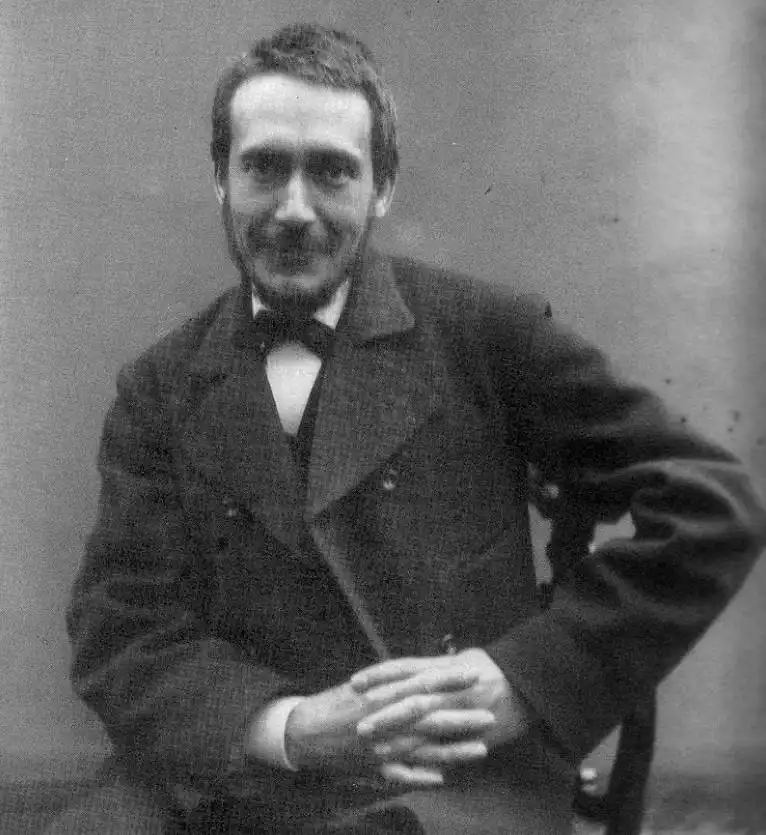
2. It depicts a pioneer in surgery lecturing students during an operation

The painting depicts the surgical theater of Jefferson Medical College, the institution that Eakins attended during the mid-1860s.
We can see an operation being conducted by Dr. Samuel David Gross (1805-1884), an American academic surgeon who held the position of professor of surgery at the college.
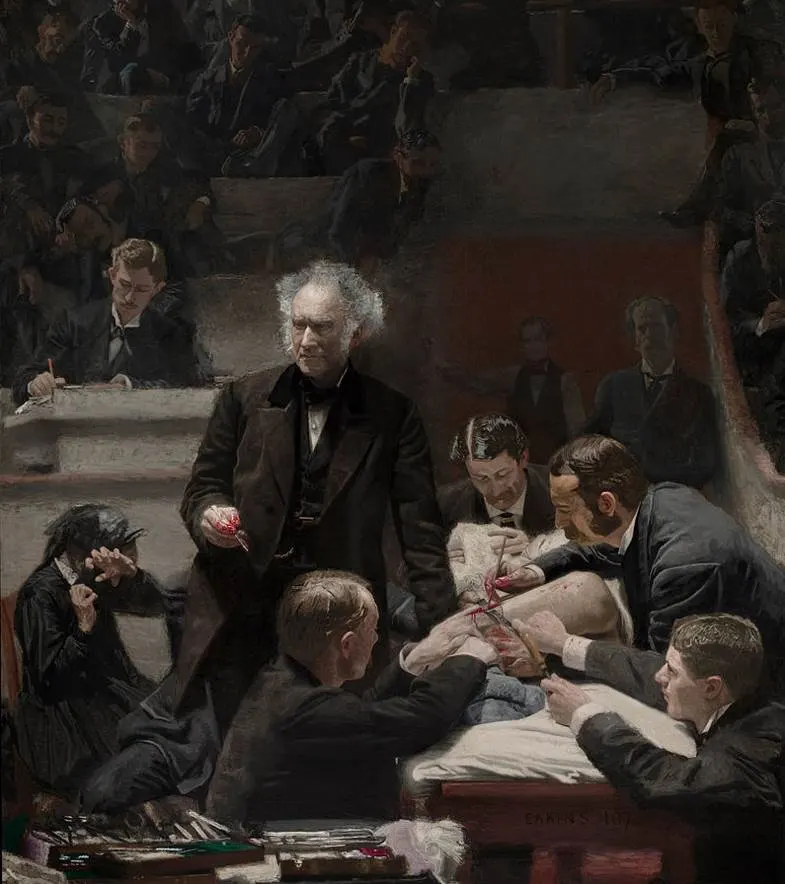
Gross was a pivotal figure in the development of surgical procedures and has, therefore, been referred to as the “The Nestor of American Surgery.”
A bronze statue of the man was created of the man between 1895 and 1897 and placed on the National Mall in Washington D.C. It has since been moved to the ground of Jefferson Medical College in Philadelphia.

3. Eakins depicted the surgical theater based on how his own experience
Gross became a professor of surgery at Jefferson Medical College in 1856, despite rejecting an offer from the University of Pennsylvania for the same position a year earlier.
Eakins studied at this medical college between 1864 and 1865 and therefore witnessed several surgeries being conducted by Gross in a specially designed surgical theater.
This was a period in history when surgery was still in its infancy. Before it was only associated with amputations, often bloody procedures in which patients frequently lost their lives.
Because of this notion, Eakins managed to accurately depict how a surgical procedure happened at the time.
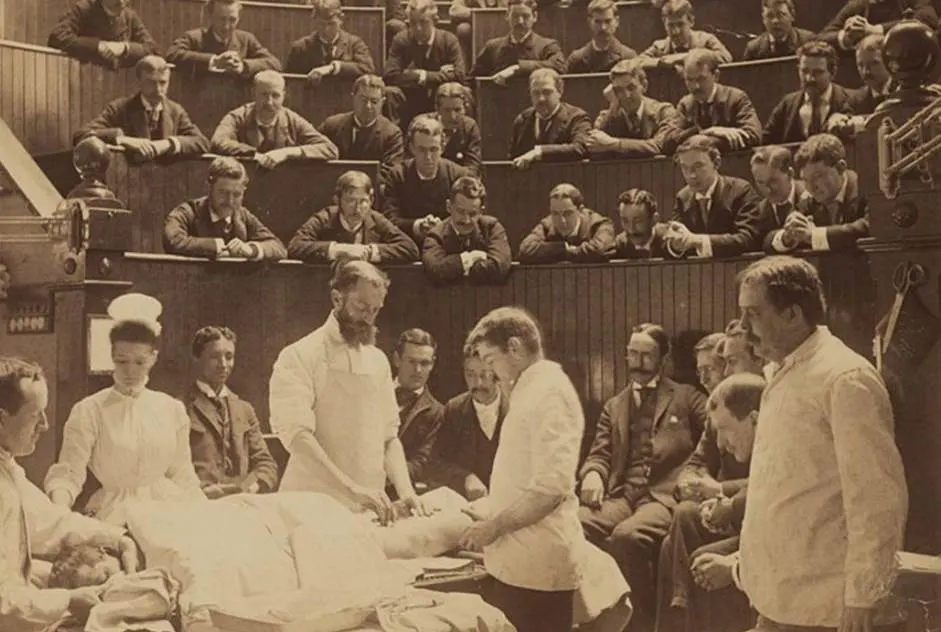
4. It’s probable that the crying woman on the left is the patient’s mother
Dr. Samuel D. Gross is the central figure in this explicit painting. He’s holding an instrument in his bloody hand as he appears to be taking a break while several students continue the operation.
The man just behind Gross has been identified as Dr. Franklin West, the clinic clerk who is writing down what is going on.
All men are serious about what they are doing, a sheer contrast to the weeping woman just left of Gross. She is believed to be the patient’s mother.
There has been some debate as to who the patient is and it has been suggested that it’s a teenage boy. It is, however, impossible to correctly identify the gender of the patient.
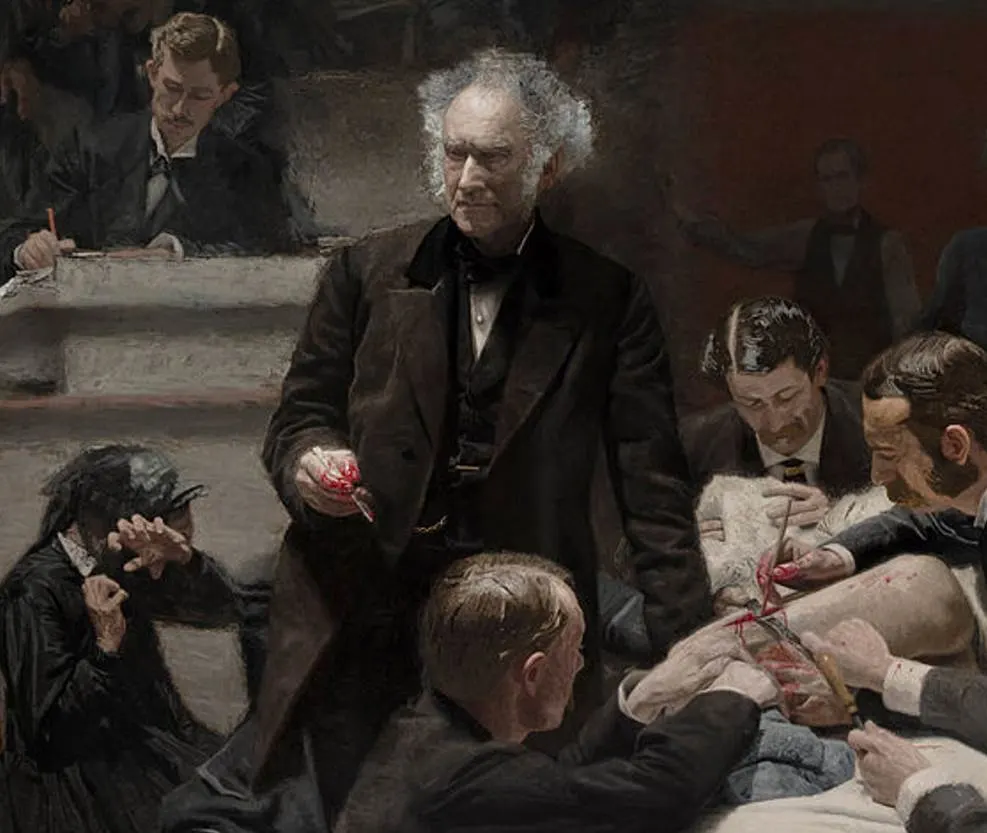
5. His follow-up painting is a testimony to the development of surgical procedures
The first thing you notice about this remarkable work of art is that there seems to be little to no focus on the hygiene of the environment.
This is referred to in medical terms as “Asepsis” which means being free of disease-causing organisms that could harm the patient.
Thomas Eakins produced another painting depicting a surgical theater in 1889 titled “The Agnew Clinic.” This much brighter view of an ongoing surgery clearly shows improvements in this area.
The professor and students conducting the surgery are wearing white coats in this painting. A professional nurse is present to oversee the procedure and most probably ensured the environment is as hygienic as possible.
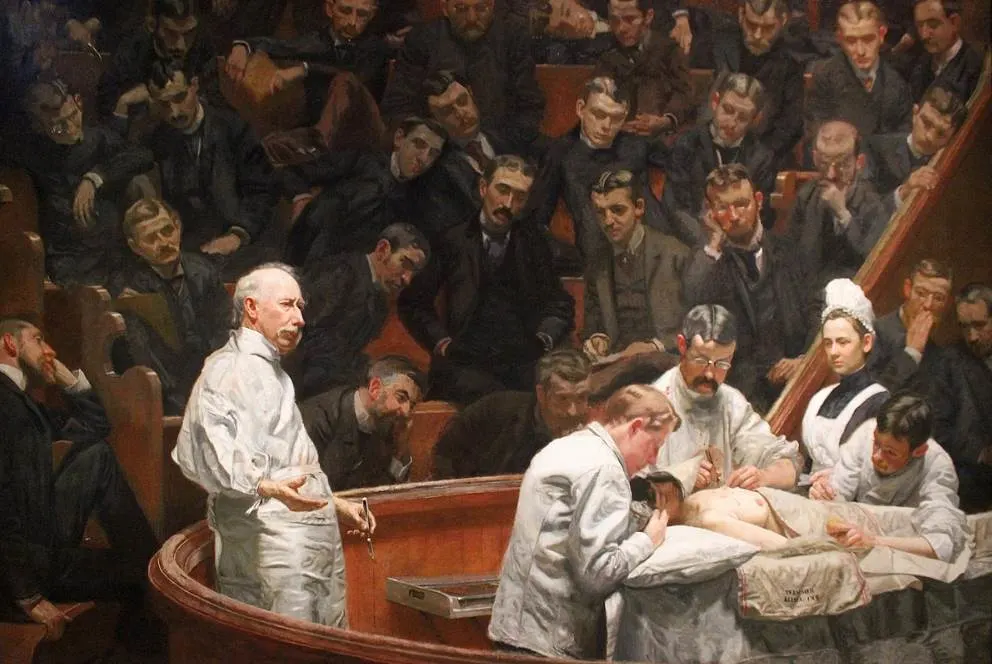
6. It nearly became part of the collection of a museum in Washington D.C. in 2006
The Gross Clinic is one of the most important paintings in the history of medicine in the United States. This wasn’t recognized at the time because the jury rejected it for the 1876 Centennial in Phildelphia.
This had more to do with the graphic content in the work which might have disturbed some visitors. As one critic wrote:
It’s one of the most powerful, horrible, yet fascinating pictures that has been painted anywhere in this century…but the more one praises it, the more one must condemn its admission to a gallery where men and women of weak nerves must be compelled to look at it.
The painting was, however, purchased for the exposition for $200. It was hung at the U.S. Army Post Hospital and moved to the College Building of Jefferson Medical College after the event.
It hung there until the 1980s before being moved to the Jefferson Alumni Hall.
It came to the attention of an art collector who wanted to donate the painting to the National Gallery in Washington D.C. An offer of $68 million was made in 2006 and the college board accepted the offer.
Opponents of the sale established a fund and tried to raise the amount to keep the painting in Philadelphia.
Half the money was raised and several of Eakins’s other paintings were sold to the sale was eventually canceled.

7. How big is The Gross Clinic by Thomas Eakins?
The graphic content of an ongoing surgery and the sheer size of this monumental work of art are what make it one of the most famous paintings in American history.
The Gross Clinic by Thomas Eakins is an oil on canvas painting that has dimensions of 240 × 200 centimeters (8 feet × 6.5 feet).
8. Where is the painting located today?
Both the Pennsylvania Academy of Fine Arts and the Philadelphia Museum of Art made some serious efforts to keep the painting in the city.
Both Eakins’s paintings “The Cello Player” and “Cowboy Singing” singing were sold to raise $68 million.
Today, the painting is part of the collection of the Phildelphia Museum of Art and a replica was placed in its original location at Thomas Jefferson University.
